The climate emergency presents the largest threat to our vision of a world where everyone has a safe and secure home as part of a successful community. The climate crisis is already harming many of the world’s poorest communities and its effects will be felt first, and most acutely, by those in the poorest housing and communities.
If global temperatures continue to rise, the effects we are already seeing – more extreme weather, wildfires, rising sea levels and desertification – will accelerate, threatening biodiversity and ecological systems. Already these events are threatening the existence of many human settlements. To prevent a runaway climate crisis, we need to rapidly reduce global greenhouse gas emissions and move towards a net-zero society urgently.
This means implementing carbon reduction measures to improve the energy efficiency of homes and taking active steps to mitigate the negative impact of the climate emergency on people and their homes. Key to achieving these ambitions is putting people and communities at the centre of positive climate action, to ensure that no one is left behind as we move towards net-zero. World Habitat recognises our role in securing a just transition and we work to support others on the journey to zero-carbon housing.
Our World Habitat Awards have given recognition to over 250 housing projects across the world that are providing a wide range of housing solutions, including those that address the climate emergency.
The featured projects below show what is possible when people and communities work together to create housing solutions to the climate emergency.
ADAPTATION AND RESILIENCE
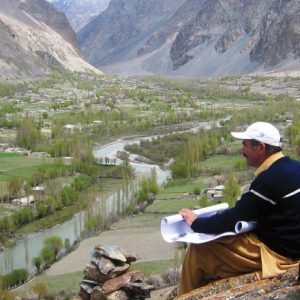 Aga Khan Agency for Habitat, Pakistan (AKAH Pakistan)
Aga Khan Agency for Habitat, Pakistan (AKAH Pakistan)
Integrating local knowledge with technology to manage disasters in Pakistan’s mountainous areas
AKAH Pakistan works in the mountainous areas of Gilgit-Baltistan and Chitra, home to some of the most isolated yet dynamic communities. These indigenous communities are especially vulnerable to earthquakes, floods and other hazards that have caused catastrophic damage in recent years, jeopardising their access to safe and secure housing.
AKAH Pakistan introduced community-based hazard, vulnerability and risk assessments (HVRAs) in the country for the first time in 2004, combining local and scientific knowledge to map risks, determine residential and economic zones, and develop disaster management plans.
AKAH geologists use satellite images and risk-mapping tools, with participation from residents, who contribute local knowledge and receive training on the process. This enables them to build in safer areas and protect against hazards caused by the climate emergency.
AKAH Pakistan has worked with over 50,000 volunteers, conducted HVRAs in almost 800 settlements (home to over one million people) and provided over 20,000 households with technical assistance to prepare for disasters and prevent damage when they occur. It has also constructed 4,000 shelters for internally displaced people and create over 280 community disaster management plans. Weather monitoring posts and community-based early warning systems are also installed. Learn More
_________________________________________________________________________________________________________
Post-Haiyan Self-Recovery Housing Programme
After Typhoon Haiyan, the biggest ever recorded in the world, devastated large areas of the country in 2013, CARE Philippines helped over 15,500 families to rebuild their homes.
This programme supported the ‘self-recovery’ of lives and homes after the typhoon hit, by providing guidance, equipment, cash grants and technical assistance.
By using locally available materials and debris from destroyed houses they have helped families to avoid relocation, retain the rights to their homes and land, and to maintain their social ties. Through training on how to make their houses safer, local people have become more resilient to natural disasters. Learn More
_________________________________________________________________________________________________________
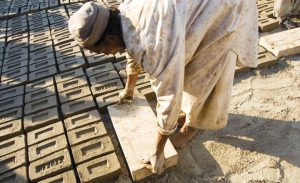
Build Back Safer with Traditional Construction Methods
Pakistan
848,000 houses were destroyed and 9.7 million people affected by severe floods in western Pakistan in 2011. This project developed and provided support to build over 20,000 flood resistant houses based on local and traditional building designs. The houses were built using local labour and construction skills.
Water resistant and lighter-weight materials – such as lime and bamboo – were introduced, creating huge savings in cost and embodied carbon over standard housing reconstruction approaches. Learn More
_________________________________________________________________________________________________________
CARBON REDUCTION /MITIGATION
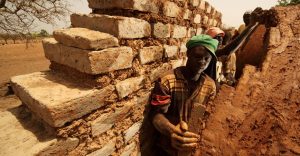 Nubian Vault housing programme in the Sahel
Nubian Vault housing programme in the Sahel
Burkina Faso, Mali, Senegal, Benin and Ghana
This project revives the ancient Egyptian architectural approach of using sun-dried mud bricks to create vaulted roofs. These replace the problem of unsuitable materials often used for houses in the Sahel.
Local people are trained which provides employment and many families benefit from improved living standards with buildings that have very low carbon emissions and are resilient to the impacts of climate change. Learn More
_________________________________________________________________________________________________________
United States of America
Mutual Housing at Spring Lake offers permanent year-round housing to agricultural workers in California. It is the first multifamily affordable rental development in the country to receive the U.S. Department of Energy’s Zero Energy Ready Homes certification. Zero Net Energy buildings produce as much energy as they use through the integration of energy efficient design and renewable energy generation.
Mutual Housing has taken a step further, with a ‘positive-net energy’ system which will produce even more energy than the residents are expected to consume. The excess will return to the state’s electronic grid system, while the residents enjoy huge cost savings in their energy bills as well as their rents.
Residents also gain skills and confidence through a range of opportunities, including leadership development schemes, peer lending circles and digital literacy classes. For many this has opened up new opportunities in education and community life. New leaders have emerged from the community who now work to advocate for the rights of agricultural workers. Learn More.
_________________________________________________________________________________________________________
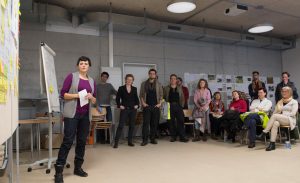 More than Housing
More than Housing
Switzerland
Thirteen buildings with nearly 400 housing units, 35 retail units and large shared community spaces and neighbourhood infrastructure (kindergarten, day care centres, etc.) provide environmentally-friendly homes for people from a wide range of backgrounds and income levels.
The project promotes social diversity throughout, from the architectural design to the allocation of tenancies.
This is one of the largest and most ambitious co-operative housing programmes in Europe, resulting from a collaboration between 50 different cooperatives. Learn More
_________________________________________________________________________________________________________
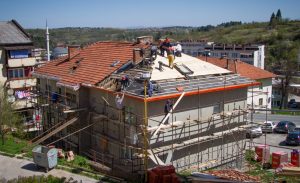 Residential Energy in Low Income Households (REELIH)
Residential Energy in Low Income Households (REELIH)
Armenia, Bosnia and Herzegovina, Macedonia
Homeowners living in formerly state-owned buildings are supported to work together to improve their homes through the project. Residents are able to borrow collectively as a homeowner association to carry out energy efficiency improvements to their homes. This makes heating homes more affordable, improving the health and well-being of residents.
The project has helped spread awareness about energy efficiency and increased the funding available to residents to improve their buildings. Learn More

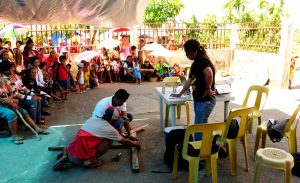 CARE Philippines
CARE Philippines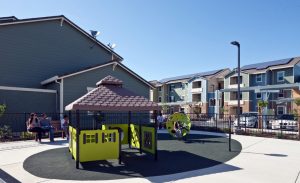 Mutual Housing at Spring Lake
Mutual Housing at Spring Lake